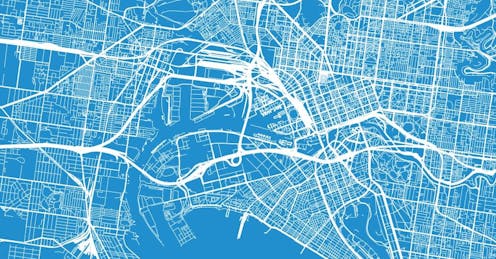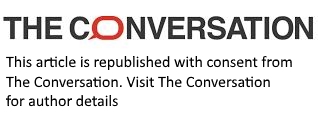Sorry Melbourne. The chance of reaching an average 5 COVID-19 cases by mid-October is under 50%
- Written by Jodie McVernon, Professor and Director of Doherty Epidemiology, University of Melbourne

Melburnians are addicted to the Victorian health department’s daily tweet of the state’s new COVID-19 cases. This figure contributes to the all-important rolling 14-day average, which alongside the number of mystery cases, tells us whether we’re on target for the next phase of reopening.
How likely is it we’ll get to the target of an average of no more than five new daily cases by October 19 and fewer than five mystery cases — the triggers for the next stage of restrictions to be lifted?
Our regular modelling updates contribute to assessment of epidemic trends in Australia. This work suggests the chance of achieving the target is 50% or less.
In the words of Victoria’s Chief Health Officer, Brett Sutton, it’s looking like a “line ball” decision.
Why aren’t the numbers going down?
Daily case reports have dramatically decreased from the hundreds seen only weeks ago. However, now numbers are low, any minor fluctuations are highly visible. We’re still seeing small outbreaks that seed chains of transmission, contributing to this day-by-day variation.
The recent outbreak linked to the Butcher Club at Chadstone shopping centre is a prime example, with workers transporting the virus back home across Melbourne and into regional Victoria. Essential work is a valid reason to leave home and travel beyond 5 kilometres, facilitating long-range spread. The potential for further outbreaks like this remains.
Then there are the cases in “stubborn” settings such as aged care. We have seen the potential for outbreaks in these environments, which are essentially residential settings housing large numbers of people at risk of severe outcomes.
While there have been major efforts to reduce introduction and spread of infection in these environments, rumbling chains of infection spread have proven difficult to stamp out.
Read more: Victoria's path out of COVID-19 lockdown – quick reference guides
At the moment, the vast majority of cases are linked, and related to spread in occupational and residential settings.
So what happens if we’re still at an average of ten cases by mid-October? By late October? Into November? Are the measures that would remain in place proportionate to these numbers, and is there good evidence those measures are needed to prevent a third wave?
It’s clear Melbourne cannot stay in lockdown indefinitely. Lockdowns are an emergency brake on widespread community transmission.
How can we safely free up society and the economy without dashing all the efforts of the past months?
Read more: Now everyone's a statistician. Here's what armchair COVID experts are getting wrong
Super-spreaders are who we should be focusing on
The biggest challenge for containing COVID-19 is the potential for super-spreading events. Many infected people do not spread the virus. But some, the super-spreaders, infect many others. Those newly infected people then return to their own homes, schools or workplaces, each with the potential to seed new infections.
So rapid identification of super-spreading events is key. This is achieved by working backwards whenever we identify a new case — a concept known as “back tracing”.
Where resources are limited, they’re best applied to investigating where a known infection came from (as that “parent” source was clearly contagious) and following up on their close contacts as quickly as possible.
At our current low case numbers, we can also focus on who the newly identified person (the “child”, who may or may not be contagious) has subsequently been in contact with.
We also need to minimise the chance of these super-spreading events from happening in the first place. We can do this by limiting the number of people who mix together in workplaces and social situations.
Keep to your bubble
It’s also useful to distinguish between mixing with known and unknown people. It’s clear SARS-CoV-2, the virus that causes COVID-19, spreads very effectively in households, where we understandably let our guard down.
Limiting our social contacts to known, repeated people or small groups or “bubbles” reduces the overall risk and makes contact tracing easier in the event of an infection. Meeting up in outdoor settings further reduces those risks.
But socialising in public places, like restaurants, provides opportunities for mixing with unknown people. That’s why COVID-safe operating practices to limit group sizes in restaurants and cafes and minimise between-group interactions are so important. And of course there are outdoor dining options if the Melbourne weather chooses to be kind.
Hong Kong managed its “second wave” very effectively without lockdowns by reducing mass gatherings, promoting remote working and learning, introducing seating restrictions in restaurants and closing bars. All these measures were explicitly focused on reducing super-spreading risk.
Read more: Friday essay: COVID in ten photos
Individual behaviours still matter
No matter where we are or who we’re with, we can all reduce our individual risk of catching or spreading SARS-CoV-2. Whether or not we are staying “at home” is arguably a lot less important than how we behave when we leave.
Despite poor choices by some, Victorians’ compliance with personal behaviours to reduce infection spread are the highest in Australia and holding steady over time, helping keep the potential for transmission down.
What happens after October 19?
Thanks to early, proactive responses to COVID-19, Australia is in the fortunate position of having achieved near-elimination.
However, it is inevitable SARS-CoV-2 infections will continue to be imported, particularly as we look to reconnect with the wider world.
As a global community, we will be living with and adapting to this virus and its impacts for years to come. We need a view beyond the next fortnight to find sustainable ways to live, work and respond.
Lockdowns have served us well. Australia has avoided catastrophe. But it is not lockdown or bust. We have other alternatives.
Authors: Jodie McVernon, Professor and Director of Doherty Epidemiology, University of Melbourne





